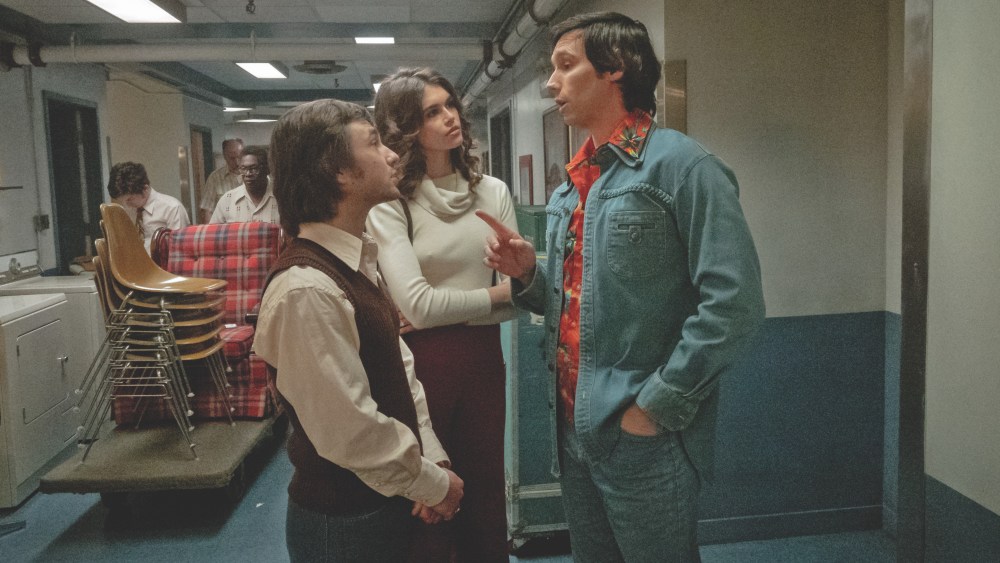‘Saturday Night’ Cinematographer Explains That Crucial Opening Shot
Jason Reitman’s “Saturday Night” opens with a roughly 3 1⁄2-minute single shot in which the camera quickly weaves through Studio 8H, capturing the chaos and energy as the now-iconic NBC series “Saturday Night Live” prepared to go “live from New York” for the Oct. 11, 1975, premiere.
“The accuracy of what it felt like to be there was the utmost consideration in approaching all the visuals in this film,” says cinematographer Eric Steelberg, who used a moving camera and long takes to guide the audience through the meticulously crafted set. “We thought it was the best way to make people feel like they were there, beat by beat, minute by minute, in those 90 minutes before they went live.
“The reason we did that [opening] shot in particular was because it’s our first exposure and entrance into the space, and we just wanted to bombard the audience with all the sights and sounds and chaos that was happening. We didn’t want to cut away from it, we wanted to travel through it,” he continues. “There’s so much detail and nuance. It’s like information overload, and that’s the way it’s supposed to feel.”
Prep was crucial as the team created this careful choreography of the camera, the actors, extras and props moving in and out of the frame. “We kept bouncing people around, because we could only afford to have so many background actors,” Steelberg relates.
“We’d have extras running from the hallway in the beginning of a shot around the outside of the set to then go be in the studio, and then those people would then run out and then go back to be in the hallway again.” Additional members of the team were offscreen, pushing props and set pieces in and out of the frame.
“Saturday Night” was lensed with an Arriflex 416 Super 16mm film camera with Kodak 200T stock to define its period look. For the opening shot, the camera sat on a remote head, which was on a dolly. Steelberg elaborates, “[Dolly grip Darryl Humber] was maneuvering the camera through the entire set with [camera operator Matthew Moriarty] at a remote position, because we needed to be as small as possible. The dolly grip had to more or less dance with all the lead and background actors.”
Lighting the scene with the camera constantly moving was no small feat, and the shot relied on placement of practical lights. “There’s a couple maybe hidden lights up in the ceiling, but for all intents and purposes, it’s practically lit,” Steelberg says, adding that in prep he sat down with production designer Jess Gonchor and set decorator Claudia Bonfe, “figuring out how to light the sets in the studio with built-in lighting that would also light the scenes [and the actors] in the way that I wanted.”
After a full day of rehearsal, the team filmed this oner on the first day of the shoot, and then returned to the shot on the final day of production. “We thought that if we can get that shot in the can on the first day that was going to set this pace and tone for the crew and the cast,” Steelberg explains. “We realized, as the movie went on and everybody became a well- oiled machine, that we could probably do a better job on that shot. So we reattempted it on the last day.” One of those final takes landed in the movie.


